#hermitage museum
Text

2,300-Year-Old Plush Bird from the Altai Mountains of Siberia (c.400-300 BCE): crafted with a felt body and reindeer-fur stuffing, all of which remains intact
This artifact was sealed within the frozen barrows of Pazyryk, Siberia, for more than two millennia, where a unique microclimate enabled it to be preserved. The permafrost ice lense formation that runs below the barrows provided an insulating layer, preventing the soil from heating during the summer and allowing it to quickly freeze during the winter; these conditions produced a separate microclimate within the stone walls of the barrows themselves, thereby aiding in the preservation of the artifacts inside.
This is just one of the many well-preserved artifacts that have been found at Pazyryk. These artifacts are attributed to the Scythian/Altaic cultures.
Currently housed at the Hermitage Museum.
#archaeology#anthropology#history#artifact#artifacts#siberia#scythians#archeology#museum#amazing#interesting#stuffed animals#ancient history#prehistoric#crafting#felt art#art#prehistoric art#hermitage museum#human nature
45K notes
·
View notes
Text
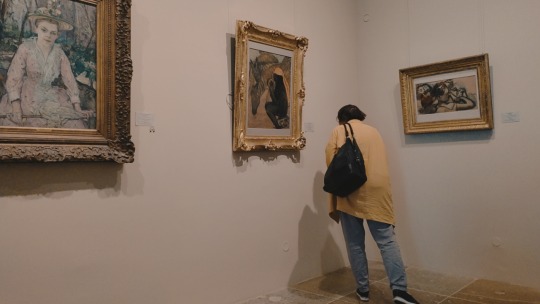
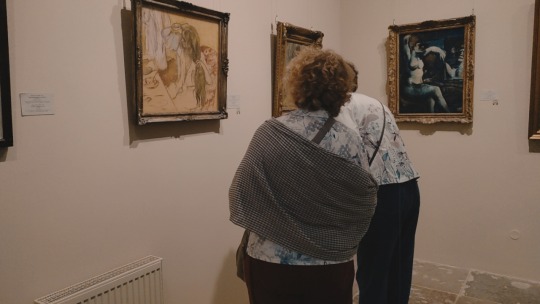


looking at people looking at art
895 notes
·
View notes
Text

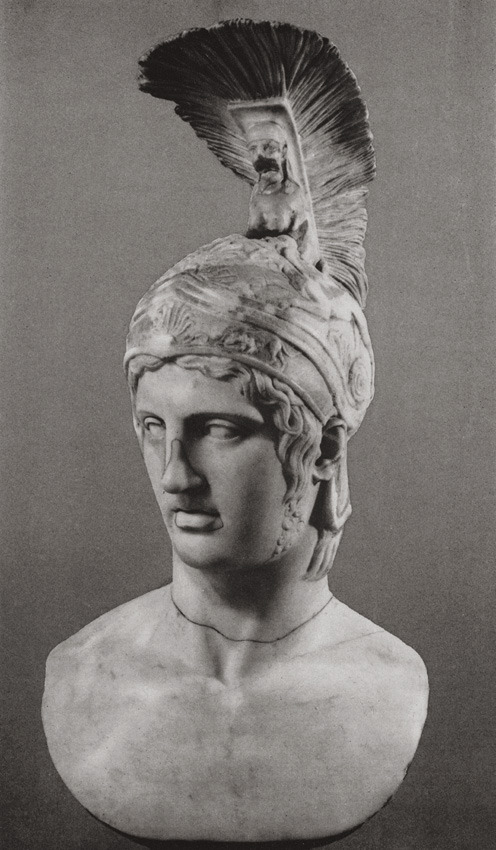

Head of Ares
#ares#mars#art#sculpture#marble#ancient greek#ancient greece#europe#european#history#gods#deity#ancient rome#roman#deities#god of war#borghese#saint petersburg#st petersburg#hermitage museum#state hermitage museum#russia#olympians#greek#greece#ancient#clasical#antiquity
835 notes
·
View notes
Text

Self-Portrait, Élisabeth Louise Vigée Le Brun, 1800
#art#art history#Élisabeth Louise Vigée Le Brun#female artists#portrait#portrait painting#self-portrait#Rococo#French art#18th century art#oil on canvas#Hermitage#Hermitage Museum
174 notes
·
View notes
Text
NEW dress belonging to OTMA has been discovered


A BRAND NEW, never-before-seen dress belonging to one of the Grand Duchesses has been discovered by the Hermitage Museum and exhibited for the first time.
It has not yet been identified who the pink and red dress belongs to. The sisters used to have their first name and patronymics stitched into the waist of their dresses in order to differentiate between them. Similarly, the dress maker is not yet known, though it is highly likely that it was produced in the workshops of either Olga Bubenkova or August Brizak, two of the Romanov family’s favourite designers.
The dress, alongside many other pieces of clothing and personal items, can be seen at the Hermitage Museum’s new exhibit, ‘OTMA & Alexei’.
Sources and photos: Дети последнего российского императора. Выбор куратора, Hermitage Museum, RomanovsOneLastDance

#olga nikolaevna#tatiana nikolaevna#maria nikolaevna#anastasia nikolaevna#otma#romanovs#sources#romanov#possessions#belongings#dresses#hermitage museum#museums#exhibitions#my own#I can’t believe I found this!!#100
307 notes
·
View notes
Text


Hermitage Museum by dobrevyana.
#hermitage museum#museum aesthetic#art museum#museum collections#museum#russian architecture#russia aesthetic#russia#alternative#aesthetic#dark academia#dark academic aesthetic#dark aesthetic#aestheitcs#dark#art#light acadamia aesthetic#light academia
2K notes
·
View notes
Text

bracelet from the Sarmatian tribe (Scythian art) in gold and turquoise.
2nd century BC/2nd century AD
Hermitage Museum. St. Petersburg. Russia
38 notes
·
View notes
Text

Portrait of Benedetto Pamphili, Alessandro Algardi, c. 1646, terracotta, Hermitage Museum, Saint Petersburg.
93 notes
·
View notes
Text

Valentine of Milan Mourning her Husband
By François Fleury-Richard, 1802, Napoleonic era, Troubadour style art
Location: Hermitage Museum, Saint-Petersburg
#art#1800s art#painting#François Fleury-Richard#Fleury-Richard#Fleury Richard#hermitage museum#Troubadour style#paintings#valentine of Milan#middle ages#medieval#medieval art#napoleonic era#napoleonic#first french empire#french empire#French art#troubadour#stained glass#stained glass windows
16 notes
·
View notes
Text
The Battle of Borodino on 26 August 1812 by Peter von Hess

The Battle of Borodino took place near the village of Borodino on 7 September (O.S. 26 August) 1812 during Napoleon's invasion of Russia. The Grande Armée won the battle against the Imperial Russian Army, but failed to gain a decisive victory and suffered tremendous losses. Napoleon fought against General Mikhail Kutuzov, whom the Emperor Alexander I of Russia had appointed to replace Barclay de Tolly on 29 August (O.S. 17 August) 1812 after the Battle of Smolensk. After the Battle of Borodino, Napoleon remained on the battlefield with his army; the Imperial Russian forces retreated in an orderly fashion southwards. Because the Imperial Russian army had severely weakened the Grande Armée, they allowed the French occupation of Moscow, using the city as bait to trap Napoleon and his men. The failure of the Grande Armée to completely destroy the Imperial Russian army, in particular Napoleon's reluctance to deploy his Imperial Guard, has been widely criticised by historians as a huge blunder, as it allowed the Imperial Russian army to continue its retreat into territory increasingly hostile to the French. Approximately a quarter of a million soldiers were involved in the battle, and it was the bloodiest single day of the Napoleonic Wars.
Although the Battle of Borodino is classified as a victory for Napoleon since he and his men managed to capture Moscow, the fierce defense of the Imperial Russian Army devastated the Grande Armée to such an extent that it caused France and its army to become militarily impuissant. Also, the city was actually used as bait to lure and trap the French forces. When Napoleon and his men visited the city, he found that it was burnt and abandoned upon his arrival. While Napoleon was in Moscow, he sent a letter to the tsar who was residing in Saint Petersburg demanding that he surrender and accept defeat. Napoleon received no response. Whilst patiently waiting for an answer from the tsar, as soon as the cold winter and snowfall started to form, Napoleon, realizing what was happening, attempted to escape the country with his men. Seeing that they were fleeing, the Imperial Russian army launched a massive attack on the French. Attrition warfare was used by Kutuzov by burning Moscow's resources, guerrilla warfare by the Cossacks against any kind of transport and total war by the peasants against foraging. This kind of warfare weakened the French army at its most vulnerable point: logistics, as it was unable to pillage Russian land, which was insufficiently populated nor cultivated, meaning that starvation became the most dangerous enemy long before the cold joined in. The feeding of horses by supply trains was extremely difficult, as a ration for a horse weighs about ten times as much as one for a man. It was tried in vain to feed and water all the horses by foraging expeditions. Of the more than 600,000 soldiers who invaded the Russian Empire, fewer than 100,000 returned.
Sources. The Battle of Borodino, from Wikipedia, the free encyclopedia
youtube
#Отечественная война 1812 года#War of 1812#Художник#Начинающий художник#famous artists#Эрмитаж#Hermitage Museum#Russian Empire#Российская империя#История России#Наполеон#Napoleon Bonaparte#Наполеоновские войны#Михаил Кутузов#Mikhail Kutuzov#Peter von Hess#theintexp#Youtube
8 notes
·
View notes
Text
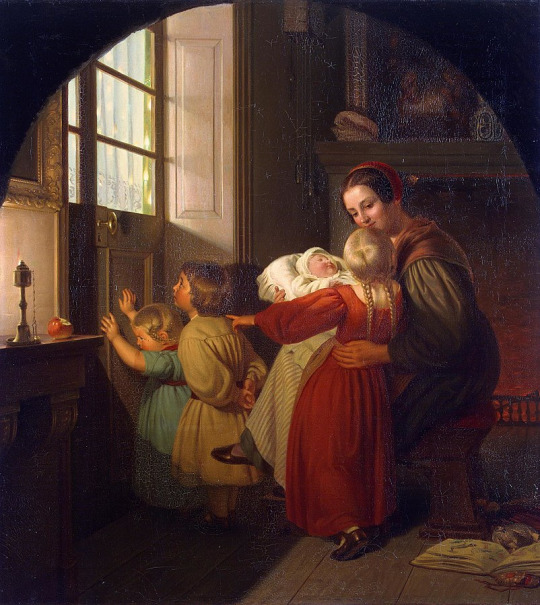
Theodor Hildebrandt (1804-1874)
"Children Expecting the Christmas Feast" (1840)
Oil on canvas
Located in the Hermitage Museum, St. Petersburg, Russia
#paintings#art#artwork#genre scene#christmas#theodor hildebrandt#oil on canvas#fine art#hermitage museum#art gallery#german artist#children#mother and baby#child#excited#interior#1840s#mid 1800s#mid 19th century#clothing#clothes
140 notes
·
View notes
Photo

Henri Matisse (French, 1869–1954)
Vase of Sunflowers, 1898
oil on canvas, 46 x 30cm
Hermitage Museum, Saint Petersburg, Russia
@ Wikimedia Commons
On the basis of style, scholars have allocated this still life to a group of works created in Corsica in 1898-1899. The trip to Corsica, the influence of the blinding light of the southern sun and the rich southern landscape, contributed to Matisse's rejection of the Impressionist atmosphere of changing, flickering light and air in his paintings. Almost Cezanne-like, Matisse made the air heavier, intensifying light and form.
The sunflower motif - the flowers still continuing to radiate the sun's energy - may well not have been an accidental choice. Like the energetic impasto brushstrokes, it leads us to recall the work of van Gogh and to consider the latter's influence on the development of the young artist. - 1890s
#henri matisse#sunflowers#french art#impressionism#flower painting#expressionism#still life#art#hermitage museum#mu art#mu#matisse info#wikimedia commons#30 art#30 notes#50 art#50 notes
70 notes
·
View notes
Text
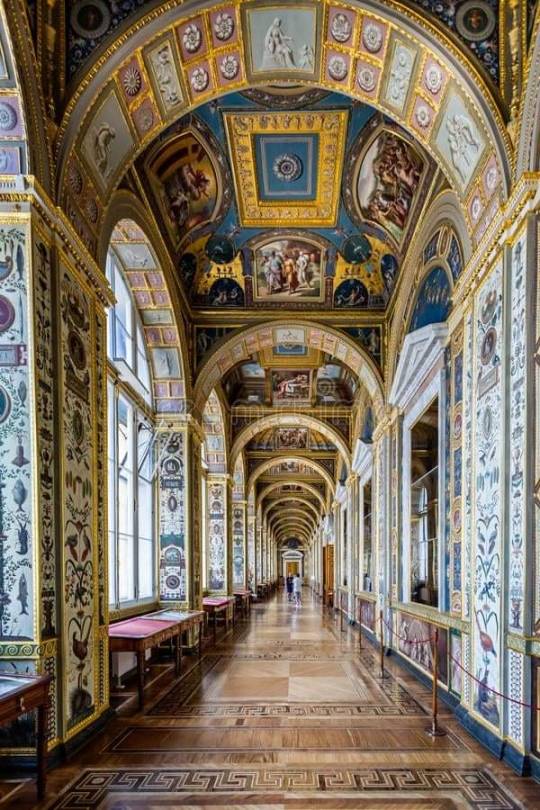
Raphael Loggias Corridor inside the Hermitage Museum, Saint Petersburg, RUSSIA
#raphael loggias#corridor#corredor#hermitage museum#museo hermitage#saint petersburg#san petersburgo#russian#russia#ruso#rusia#europe#europa
65 notes
·
View notes
Text

Lilacs, Vincent van Gogh, 1889
#art#art history#Van Gogh#Vincent van Gogh#landscape#landscape painting#Post-Impressionism#Dutch art#19th century art#oil on canvas#Hermitage#Hermitage Museum
843 notes
·
View notes
Text



On the photograph: on the left - Alix of Hesse in the ball gown; on the right and below - the shell pink and white silk brocade with the sleeves of shiffon ball gown made in 1894.
The State Hermitage Museum, St Petersburg, Russia, holds this charming ball gown from 1894. It was owned and worn by the then Princess Alix of Hesse soon to become the Empress Alexandra Feodorovna, wife to Nicholas II.
The gown was made in Frankfurt, Germany, though the maker’s name is lost to time.
In the two accompanying photographs Princess Alix is shown wearing the dress with a cummerbund style belt which has not survived with the gown.
#investigation#research#romanovs#nicolas ii#seraphima bogomolova#photographs#Saint Petersburg#fashion#dress#Alexandra Feodorovna#Alix of Hesse#hermitage museum
4 notes
·
View notes
